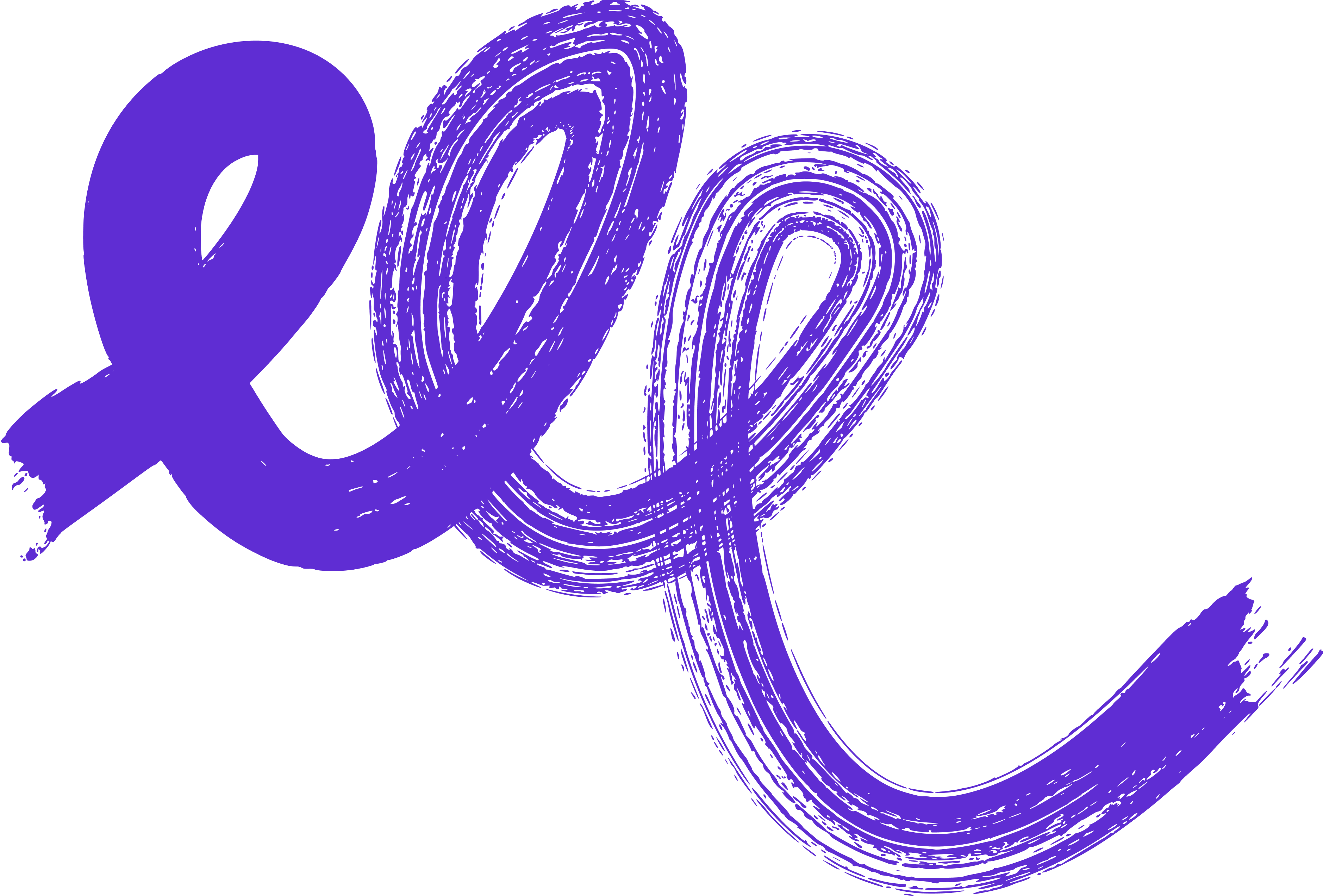🌍 All
About us
Digitalization
News
Startups
Development
Design
Design Prototyping: Your Guide
Miłosz Piróg
Jan 02, 2023・8 min read
Table of Content
What is Design Prototyping?
Benefits of Design Prototyping
Types of Design Prototypes
Prototyping Processes
Best Practices for Design Prototyping
Popular UI Tools for Design Prototyping
FAQs on Design Prototyping
Resources for Learning More About Design Prototyping
Challenges in Design Prototyping
In this blog post, we're diving deep into the realm of "Design Prototyping", a process integral to the UX Design and development process. It allows design teams to create a preliminary version of their product, facilitating user testing and enabling the development of fully functional products. From paper prototypes to high-fidelity digital prototypes, this guide covers every aspect, including popular prototyping tools and processes. Let's delve into this comprehensive guide that promises to be your beacon in the journey of building prototypes that resonate with real users.
What is Design Prototyping?
In the very early stages of the design process, it's essential to have a clear idea of what the final product should look like and how it should function. This is where design prototyping steps in. It allows you to create prototypes to test ideas, receive user feedback, and make necessary adjustments before finalizing the design concepts.
Design prototyping is an iterative process wherein a prototype, which can be a low-fidelity sketch or a high-fidelity digital prototype, is created to visualize and test the product concept. These prototypes start as rough ideas and gradually develop into fully functional versions, closely resembling the final version of the product.
- Low-Fidelity Prototypes: Often in the form of sketches or paper prototypes, they help in mapping out the basic design and user flow, primarily focusing on functionality rather than visual design.
- High-Fidelity Prototypes: These are digital prototypes that offer interactive elements, closely mirroring the final product's look and feel.
Benefits of Design Prototyping
Reduced Risks
Through design prototyping, you can avoid costly mistakes in the later stages. It enables you to identify and rectify weak ideas and unnecessary features, ensuring that the final product meets user needs efficiently.
Evaluate Technical Feasibility
At times, what seems good on paper might not be technically feasible. Prototyping assists in evaluating the technical aspects early on, helping to steer the project in the right direction.
Effectively Present Idea to Customers
Using prototypes, you can present a clear idea to the customers, allowing them to understand the envisioned product better. It facilitates gathering focused feedback and making informed decisions.
Iterate at Lower Costs
Prototyping enables the design teams to make iterations at a lower cost. It helps in refining the design thinking process without investing heavily in development resources.
Simulate the Future Product
Design prototyping helps in simulating the future product, offering a glimpse of the user's journey with interactive prototypes. It allows the stakeholders to have a firsthand experience of the final product's functionality.
Provide Focused Feedback
Through user testing with prototypes, you can gather focused feedback. It facilitates making necessary alterations based on real users' experiences, ensuring a well-rounded final product.
Types of Design Prototypes
From paper prototypes to high-fidelity digital prototypes, the types vary significantly based on the stages of development. Let’s explore these types in detail:
Sketches and Diagrams
These are the initial representations, often created during brainstorming sessions. They give a broad view of the product's layout and user flow.
Paper Interface
Paper prototypes are often used in the early stages to draft the basic structure and user interfaces, offering a tangible view of the product's functionalities.
Storyboards
Storyboarding is a technique where a series of sketches are used to depict the user's journey, providing a visual narrative of the user interaction with the product.
Role-Playing
It is a method where designers enact various user roles to understand the human-computer interaction better, facilitating the creation of user-centric designs.
Physical Models
Physical models or paper prototypes help in visualizing the physical product dimensions, especially useful when designing tangible products.
Wizard of Oz Prototypes
These are interactive prototypes where designers simulate the digital interface manually, helping to gather valuable user feedback without developing a functional prototype.
User-Driven Prototypes
These prototypes are developed based on user feedback, ensuring that the product meets the target audience's expectations effectively.
Prototyping Processes
Understanding the prototyping process is crucial for developing a successful product. Here, we delve into various processes that can be adopted in design prototyping:
Paper => Lo-fi Digital => Hi-fi Digital => Code
This process starts with paper prototypes, moving to low-fidelity and high-fidelity digital prototypes, and finally transitioning into coding. It is a gradual process where the prototype evolves at each stage, getting closer to the final product.
Paper => Lo-fi Digital => Code
In this process, after the low-fidelity prototype stage, the prototype directly moves to the coding phase, skipping the high-fidelity digital prototype stage.
HTML Prototyping => Code
This method involves creating an HTML prototype that can be directly coded, facilitating a smoother transition to the development process.
Paper => UXPin Merge – Hi-fi Prototyping => Code
In this process, paper prototypes are first created, which then move to a high-fidelity prototype using UXPin Merge, followed by the coding phase. It facilitates creating highly interactive and functional prototypes.
Best Practices for Design Prototyping
When indulging in design prototyping, following certain best practices can help in creating successful prototypes. These include:
Sketches
Start with sketches to get a rough idea of the design layout. It facilitates brainstorming and coming up with innovative design concepts.
Paper Prototypes
Paper prototypes are an inexpensive way to visualize the product's basic structure. It helps in defining the user flows and testing the initial concepts.
Lego Prototypes
These are physical models created using Lego blocks to visualize the product in three dimensions, offering insights into the physical aspects of the product.
Digital Wireframes
Creating digital wireframes helps in mapping out the information architecture, providing a clear view of the product's layout and functionalities.
Wizard of Oz Prototypes
Utilize this method to simulate user interactions manually, helping to gather user feedback without developing a fully functional digital prototype.
Popular UI Tools for Design Prototyping
Several popular prototyping tools are available to assist in the design process. These tools facilitate creating interactive prototypes that offer a closer representation of the final product. Some of the popular tools are:
- Adobe XD: A popular tool for creating high-fidelity prototypes with interactive elements.
- Sketch: A vector-based design tool that facilitates creating detailed digital prototypes.
- Axure: A comprehensive tool offering advanced features for creating high-fidelity prototypes with interactive components.
- InVision: A popular tool for creating clickable wireframes and prototypes, facilitating user testing.
FAQs on Design Prototyping
As we navigate through the world of design prototyping, several questions might arise. Here, we answer some frequently asked questions to provide you with a comprehensive understanding:
- What is the significance of design prototyping in the UX design process?
Design prototyping plays a crucial role in the UX design process. It facilitates testing and validating the design concepts in the early stages, helping to avoid costly mistakes in the later phases. - How does design prototyping aid in the design thinking process?
Design prototyping is an integral part of the design thinking process. It allows for iterative testing and improvements based on user feedback, facilitating the development of a product that meets user needs effectively. - What are the different stages in the prototyping process?
The prototyping process involves various stages, including sketching, creating paper prototypes, developing low-fidelity and high-fidelity prototypes, and finally transitioning into the coding phase. It is a gradual process where the prototype evolves at each stage. - How can one choose between low-fidelity and high-fidelity prototypes?
The choice between low-fidelity and high-fidelity prototypes depends on the project requirements. Low-fidelity prototypes are used in the initial stages to test the basic concepts, while high-fidelity prototypes are utilized in the later stages to test the detailed functionalities and interactive elements. - What are the benefits of using paper prototypes in the design process?
Paper prototypes offer a cost-effective way to visualize and test the basic concepts in the initial stages. They facilitate quick iterations and help in gathering user feedback without investing in high-fidelity prototypes.
Resources for Learning More About Design Prototyping
If you are keen on diving deeper into the world of design prototyping, here are some resources that can be immensely beneficial:
Challenges in Design Prototyping
Design prototyping, though highly beneficial, comes with its set of challenges. Here we discuss some common hurdles and how to overcome them:
Time and Resource Constraints:
Often, design teams face time and resource constraints during the prototyping sessions. It's essential to plan and allocate resources wisely to ensure a smooth process.
User Feedback Integration:
Integrating user feedback effectively can be a challenge. Design teams need to analyze the feedback critically and make necessary alterations to the prototypes to ensure a user-centric final design.
Technical Feasibility:
Evaluating the technical feasibility of the concepts in the early stages can be challenging. Teams need to work closely with the technical experts to ensure that the design concepts are technically viable.
Overcoming the Challenge: To bridge these gaps, it's essential to establish clear channels of communication and regularly hold meetings where all stakeholders can discuss their perspectives and collaborate effectively. Utilizing design thinking strategies can foster a collaborative environment where open dialogue is encouraged.
Keeping Up with Rapid Technological Advancements:
The world of design prototyping is ever-evolving with new tools and technologies coming up constantly. Sometimes, it becomes a challenge to keep up with these rapid developments.
Overcoming the Challenge: Encourage continuous learning within your design team. Make time for training sessions and workshops where team members can learn about the latest tools and technologies in design prototyping.
Balancing Fidelity Levels:
During the prototyping process, deciding on the appropriate fidelity level can be a challenge. Whether to go for low fidelity prototypes in the very early stages or to invest time and resources in creating high fidelity prototypes can sometimes be a complex decision.
Overcoming the Challenge: Utilize a phased approach, starting with low fidelity prototypes to test the broad concepts and then gradually moving towards higher fidelity prototypes as the design becomes more refined. This helps in avoiding unnecessary features and focusing on the core functionalities.
Achieving Functional Consistency:
Ensuring that the functional prototypes align perfectly with the final product vision can be a daunting task. Sometimes, prototypes might deviate from the initial concept during the development process.
Overcoming the Challenge: Regular review sessions can be instrumental in keeping the project on track. Create prototypes that clearly outline the user's journey and make sure that regular feedback is incorporated to maintain alignment with the final product vision.
User Testing Challenges:
Sometimes, gathering real users for testing the prototypes can be challenging. It might also be difficult to collect focused feedback that is actionable.
Overcoming the Challenge: Utilize online platforms to gather a diverse group of users for testing. Also, structure the user testing sessions in a way that encourages users to provide focused feedback. You can prepare a set of questions or guidelines to help users provide the feedback that is most beneficial.
Intellectual Property Concerns:
In the world of design prototyping, protecting your unique design concepts and prototypes from being copied can sometimes be a challenge.
Overcoming the Challenge: Ensure that you have proper legal agreements in place to protect your intellectual property. You might also consider applying for patents to safeguard your unique design concepts.
By identifying these challenges in the early stages of the design prototyping process and finding effective solutions, you can pave the way for a smooth and successful prototyping journey.
How to Test a Prototype
Testing a prototype is a critical step in the design prototyping process. Here we provide a step-by-step guide to testing a prototype effectively:
- Define the Test Objectives: Start by defining the objectives of the test. It helps in focusing on the critical aspects during the testing phase.
- Select the Right Users: Choose the right set of users who represent your target audience to gather relevant feedback.
- Create Test Scenarios: Develop test scenarios that replicate real-world situations to evaluate the prototype's performance under various conditions.
- Gather User Feedback: Conduct user testing sessions to gather user feedback. It helps in identifying the areas that need improvement.
- Make Necessary Improvements: Based on the user feedback, make necessary improvements to the prototype to enhance its functionality and usability.
Cost and Time Considerations for Design Prototyping
Embarking on a journey of design prototyping necessitates meticulous attention to both time and budgetary constraints. In this segment, we delve deeper to furnish you with strategies that will ensure you navigate through these critical aspects adeptly:
Budget Allocation:
Allocating a precise budget for the design prototyping venture is a pivotal first step. This budget should encompass all potential expenses including the acquisition of essential tools and hiring skilled professionals. It's beneficial to earmark a segment of the budget for unforeseen contingencies, ensuring that unexpected costs do not stall the prototyping process.
Time Management:
Time is of the essence in the realm of design prototyping. Instituting a well-thought-out timetable that demarcates specific timelines for each segment of the process can prevent delays and ensure a seamless flow from conceptualization to realization. Utilize project management tools to track progress and adjust timelines as necessary, accommodating for feedback and revisions which are inherent to the design process.
Resource Allocation:
Efficient resource allocation is a cornerstone of a successful design prototyping initiative. This encompasses not only financial resources but also the human resources. Gauge the skill sets necessary at various junctures of the project and ensure that your team is equipped with the requisite knowledge and expertise. Training sessions and workshops can be an excellent way to upskill the team, aligning them with the project’s demands.
Utilizing Prototyping Tools:
In the contemporary digital landscape, a plethora of popular prototyping tools are at your disposal to streamline the design process. These tools can significantly cut down both time and costs by facilitating the swift creation of interactive prototypes. Make sure to choose tools that are well-suited to your project’s needs, offering features that can enhance the efficiency and quality of your prototypes.
Cost-Benefit Analysis:
Before delving into the design prototyping process, undertake a thorough cost-benefit analysis. This analysis should evaluate the potential return on investment that the project could yield, ensuring that the time and money invested are proportionate to the anticipated benefits.
Agile Approach:
Consider adopting an agile approach to design prototyping, which fosters flexibility and responsiveness to changes. This approach can be a cost-effective way to adapt to feedback and make necessary alterations without incurring hefty expenses.
FAQs:
- What is design prototyping? Design prototyping is a phase in the development process where a preliminary model (or prototype) of the final product is created to visualize and test its functionality, user interface, and overall design, helping to identify areas for improvement before finalizing the design.
- Why is design prototyping essential? Design prototyping is crucial as it allows design teams to visualize concepts, test ideas, gather user feedback, and make necessary adjustments before the development of the final product, thus saving time and resources.
- What are the different types of design prototypes? The different types of design prototypes include paper prototypes, low fidelity and high fidelity digital prototypes, interactive prototypes, and physical models. Each type serves specific purposes in the design process.
- How does design prototyping reduce risks? Design prototyping helps in identifying potential issues in the early stages of development, allowing for adjustments before substantial resources are invested, thus mitigating risks related to usability, functionality, and design flaws.
- What are the steps involved in the prototyping process? The prototyping process typically involves the following steps: conceptualization, sketching, creating low fidelity prototypes, developing high fidelity prototypes, user testing, and iterating based on feedback until the final version is achieved.
- What are some popular tools for design prototyping? Some popular prototyping tools include UXPin, Sketch, Adobe XD, and InVision. These tools facilitate the creation of interactive and high fidelity prototypes, enhancing the design process.
- How can I ensure effective user testing during the prototyping sessions? To ensure effective user testing, it's vital to select a diverse group of real users, create a structured testing environment, gather focused feedback, and analyze the results to make informed decisions in the further development process.
- What factors should be considered in budget allocation for design prototyping? While allocating a budget for design prototyping, consider costs related to tool acquisition, hiring skilled professionals, user testing, and setting aside a contingency fund for unexpected expenses.
- How can I manage time effectively during the design prototyping process? Effective time management can be achieved through realistic timeline setting, utilizing project management tools, and adopting an agile approach that allows for flexibility and rapid adjustments based on feedback.
- What are the challenges in design prototyping and how can they be overcome? Challenges in design prototyping include time and resource constraints, integrating user feedback, technical feasibility, and communication gaps. These can be overcome with proper planning, resource allocation, continuous learning, and establishing clear communication channels among stakeholders.
- How does design prototyping aid in providing focused feedback? Design prototyping facilitates focused feedback by creating a tangible model that stakeholders can interact with, thus allowing for specific, actionable insights and suggestions for improvement.
- What is the role of design thinking in the prototyping process? Design thinking fosters a user-centric approach, encouraging empathy, collaboration, and iterative testing, which are vital in creating successful prototypes.
- What are high fidelity and low fidelity prototypes? High fidelity prototypes are detailed, interactive, and close to the final product in terms of design and functionality, while low fidelity prototypes are simpler, focusing on concepts and user flow, often lacking detailed visual design elements.
- What are the benefits of using paper prototypes in the initial stages? Paper prototypes are cost-effective and allow for quick iteration, facilitating the visualization of basic concepts and user flows without investing in complex tools or resources.
- What considerations should be made while choosing prototyping tools? When choosing prototyping tools, consider factors like the project's requirements, the tool's features, ease of use, integration capabilities with other tools, and budget constraints.
- How does design prototyping help in simulating the future product? Design prototyping helps in simulating the future product by creating a tangible representation of the concept, allowing stakeholders to visualize, interact with, and test the functionality and user interface, thus paving the way for a successful final product.
- What are the best practices for creating digital wireframes? Best practices for creating digital wireframes include maintaining clarity, focusing on user experience, incorporating interactive elements, and utilizing tools that allow for easy alterations and iterations.
- How do prototyping and user interface design correlate? Prototyping plays a significant role in user interface design by offering a platform to visualize and test the interface elements, assess user interaction, and gather feedback to fine-tune the design.
- What skills are necessary for successful design prototyping? Skills necessary for successful design prototyping include creativity, analytical thinking, proficiency in using prototyping tools, understanding of user experience principles, and effective communication skills.
- How to measure the success of a design prototype? The success of a design prototype can be measured through user testing feedback, the fulfillment of the project's objectives, and the effectiveness of the prototype in conveying the intended design and functionality to stakeholders.

 Don't miss a beat - subscribe to our newsletter
Don't miss a beat - subscribe to our newsletterYou may also  like...
like...

How Generative AI is Revolutionising Product Design: A Practical Guide
Generative AI is reshaping product design, enabling innovation and efficiency. Discover its technologies, applications, and future implications in this practical guide.
Marek Pałys
Jun 04, 2024・13 min read

Mastering High-Fidelity Prototyping: A Comprehensive Guide for Everyone
Explore the world of high-fidelity prototyping. Learn how to create detailed, interactive prototypes that mirror final products using the right tools and techniques.
Alexander Stasiak
Dec 03, 2024・9 min read

The Basics of Usability Testing for Low-Fidelity Prototypes: A Practical Guide
Usability testing for low-fidelity prototypes enables teams to test core functionality and gather user feedback early in the design process. This guide covers key steps, tools, and techniques to ensure user-centered, efficient design iterations.
Alexander Stasiak
Nov 29, 2024・9 min read




